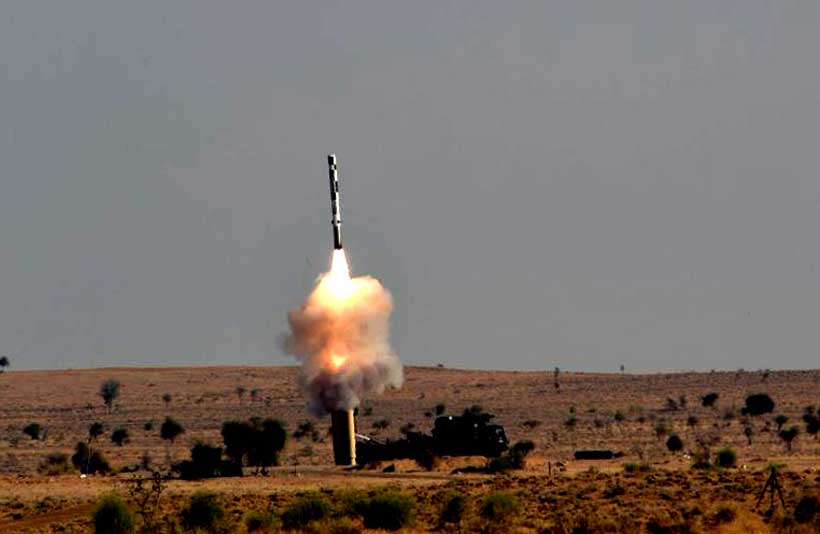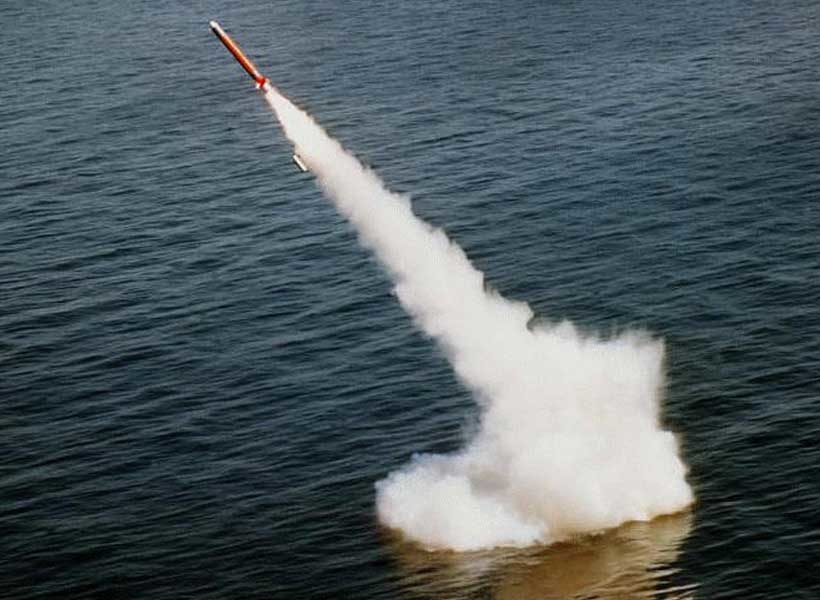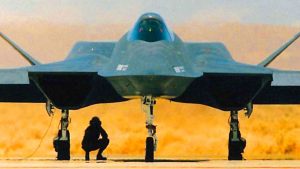India’s Cruise Missile & PGB Programs Explained
Integrated Missile Development Program:
In India’s defense history, the year 1983 has a great significance. It was that golden year when the collective efforts of the country’s decision-makers and scientists paved the way for the “Integrated Missile Development Program,” widely known as IGMDP. They brought the defense needs into the limelight and made critical decisions to make India independent in the Cruise Missile programs. One of the essential objectives of IGMDP was the development of a wide range of missiles varying from short to intermediate range.
The Need of a Cruise Missile System and the Foundation of Brahmos Aerospace:
In 1991, right after the Gulf war, the need for a cruise missile system increased rapidly. Meanwhile, India’s old ally “Russia,” joined hands to develop a cruise missile system. February 12, 1998, is a remarkable date in India’s missile history as both Russian and Indian Governments signed an agreement. This agreement was mutually signed by Dr. Abdul Kalam, a legendary aerospace scientist, former president of India, and NV Mikhailov, Deputy Defense Minister of Russia. This agreement laid the foundations for the joint venture between key players, and Brahmos finally came into existence. The sole purpose of this joint venture was the development of the world’s first supersonic cruise missile. From designing to manufacturing, both entities joined hands to pioneer the supersonic cruise missiles. According to the agreement, both sides agreed on joint production and development. India’s share was 50.5%, whereas Russia’s share was 49.5%. Next year, they made the deal, and Brahmos Aerospace received $126.25 million from Russia and $123.75 million from India. Multiple Indian and Russian institutions, along with the industries, were involved in developing this cruise missile system. The first successful test was conducted on June 12, 2001, in Orissa. Since 2001, several tests have been completed, and Brahmos is so far successful while meeting the requirements of its intended users. This system is being used by all three forces of India, i.e., Army, Navy, and Air Force.
Features of Brahmos Missile:
Brahmos Aerospace designs and manufactures the supersonic missile. The name “Brahmos” came from the two rivers of India and Russia (Brahmaputra and Moskva). India’s Defense Research and Development Organization and Russia’s NPO Mashinostroyenia, with their collaboration, developed and further enhanced one of the world’s most advanced missile systems. With a flight range of 290 kilometers, Brahmos being a technological wonder, can achieve astonishingly high velocity, which is up to Mach 3 (3 times the speed of sound). With its multi-staged propulsion system, Brahmos achieves the initial high speed by a solid-propellant engine. It further reaches supersonic speed with the help of a liquid-fueled ramjet system.
Back in 2013, the Brahmos missile was further modified with advanced satellite navigation systems used by Russians in their cruise missiles. Brahmos cruise missiles can be launched from sea, air, and land vehicles. In cruise missiles, Brahmos is regarded as the fastest anti-ship missile. With its beginning in 2001, land and ship-launched versions of Brahmos missiles are under usage from 2005 and 2007, respectively. However, the air-launched version was introduced in 2012. However, it came into service in 2019. Brahmos-A (air-launched version) was a breakthrough in missile technology. Both countries are consistently working on modifying the Brahmos missile further.
Types of Brahmos Missile System:
In continuation to the first trial conducted in 2001, a second trial was carried out on June 14, 2004. Block 1, which has been in service since 2007, had a variant named Block II, which was introduced in 2009 with a test trial. Block II created a world record when it was fired in steep mode with supersonic speed. In 2010, another successful test was conducted that resulted in the arrival of Block III.
Bramos N1:
This ship-based missile system is used in different warships to attack both land and sea-based targets. Brahmos Aerospace developed a “Vertical launcher module” with its universal application for the N1 missile. The UVLM has an unbelievable ability to launch eight missiles at once to demolish multiple warships possessing an advanced anti-missile defense system. The first version of Brahmos N1 has been in service since 2005 after they were installed on warships of the Indian navy.
Brahmos-A: The Air-Launched Variant
Joint efforts of both parties were in place since 2012 for the development of the air-launched version of Brahmos. The successful test was conducted back in 2012. However, Brahmos-A came into service in 2019. This modified variant has an extended range of 500 km and can be launched from “Sukhoi Su-30MKI”. Several improvements were made in Brahmos-A to reduce its weight to 2.55 tons. A small booster is used along with adding fins to achieve airborne stability right after the launch. Brahmos-A can be launched from a maximum height of 14000 meters. For about 150 meters, this missile falls freely. The cruise phase is achieved at 14000 meters, and it reaches the terminal phase at 15 meters. A “Sukhoi Su-30MKI” aircraft can carry a single Brahmos-A. The Cabinet Committee approved the purchase of 200 Brahmos-A cruise missiles in 2012 at 1 billion dollars. The successful trial flight was carried out back in 2016 when the heavyweight cruise missile was attached to a modified Su-30MKI. The successful test-fire was carried out on November 22, 2017, in the Bay of Bengal against the sea-based target. After this successful test, the combination of Brahmos-A and Su-30MKI was confirmed. In January of 2020, the Indian Air force acquired its Brahmos-A-equipped Su-30MKI fighter jets.
Brahmos Submarine-launched Variant:
The first successful trial of the submarine-launched variant was done in 2013, and so India became the first country to have a submarine-launched supersonic cruise missile. The submarine-launched version can be launched from 50m below water’s surface. Another core feature of the submarine-launched variant is its range of 290 kilometers per hour.
The Hypersonic Version: Brahmos II
Another project under this joint venture is in progress in which both the Brahmos II is under development. Brahmos II is going to be the fastest hypersonic missile in the world. The maximum velocity of Brahmos 2II will be ranging from Mach 5 to Mach 7.
Indian Precision-Guided Weapons Programs:
Back in 2016, for the further enhancement of the defense system, a domestic company was to produce precision-guided and laser-guided bombs for the Indian Army. OIS Advanced Technology partnered with Sagem (France) to manufacture these weapons. At that time, India used to import from Israel, Russia, France, and the USA. It was the beginning of the joint venture between two countries.
During the Kargil war of 1999, the Indian Air Force used laser-guided bombs for the first time. However, they decided that such costly weapons would not be used, so only a few were acquired for the Mirage 2000 jet. A laser-guided bomb, also known as the “Smart Bomb, “uses semi-active laser homing to hit its target. This innovation significantly increases the accuracy of the laser-guided missile as compared to the unguided rocket. LGBs are used by most of the Air forces around the world. It illuminates its target with the help of laser light. The laser is reflected back and detected by the seeker’s head of the bomb. The bomb then glides towards its target and hits it with unbelievable accuracy.
Sudarshan Laser-guided Bomb:
Sudarshan is a laser-guided bomb developed by Aeronautical Development Establishment India for Indian Air Force. The United States is credited for creating the first laser-guided bombs in the 1960s. After that, several countries developed laser-guided bombs, including Britain, Russia, and France. The ADE started working on the development of LGB in 2006. This project aimed to manufacture a superior version of the guidance kit to enhance the accuracy of bombs further. The guidance kits are usually attached at the front and rear end of the bomb. These kits, after installations, assist in beam riding and provide an accurate beam path. The laser guidance seeker is the core competence of an LGB. Attached to the nose of the bomb, the seeker marks the target. IIT and ADE designed seeker. Both organizations worked with Bharat Electronics Limited to create the final product. On January 21, 2010, two trials were conducted in Orissa.
The trial was successful, and objectives were met. Control and guidance systems were proved as effective. ADE conducted the test trials, whereas the Indian Air Force participated in the trials of laser-bomb kits. After extensive research and simulation, another trial was carried out in the Pokhran test range. The objective of this trial was to measure the precisions, consistency, and performance of the laser-guided kits. Indian Air Force participated in this trial too. These successful tests enabled ADE to improve further and extend the features of existing laser-guided bombs. Indian Air Force is consistently upgrading their unguided bomb system to meet these standards.
DRDO Inertial Guided Bomb:
In 2019, a successful test-fire was carried out at the Pokhran test range. This innovative “Inertial Guided Bomb” successfully met the requirements by achieving the desired range and accuracy. The precision was highly commendable, and thus it was marked as a major achievement for the Defense Research and Development Organization.






